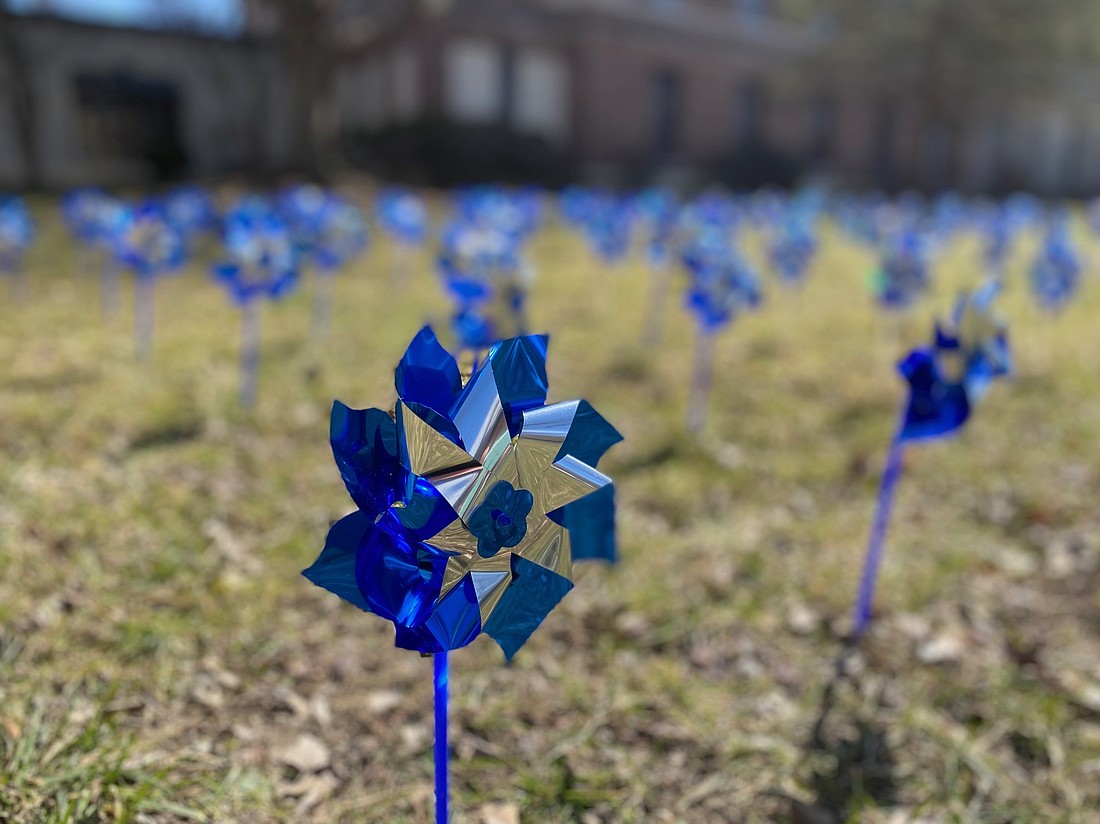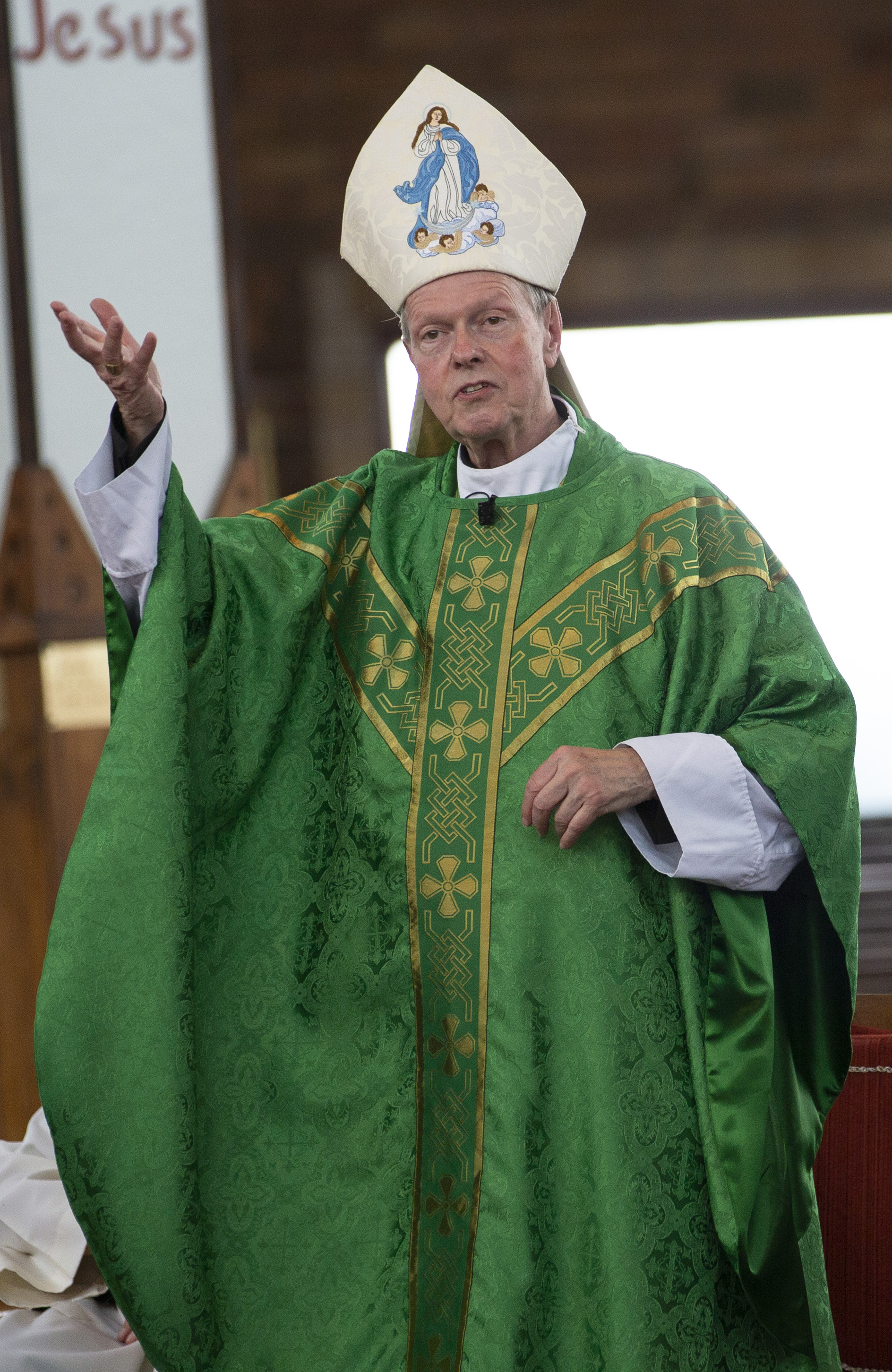April 26, 2023 at 9:39 a.m.
‘SIR, WE WOULD LIKE TO SEE JESUS’
I’ll begin with two thoughts, the first is from Corpus Christi Church in Round Lake where I worked before entering the seminary. On the ambo at Corpus Christi, there is a little piece of paper taped by the microphone that says: “Sir, we would like to see Jesus” (John 12:21). It’s a reminder for the preacher to fulfill what the Homiletic Directory instructs, “that the homily should be tailored to the needs of the particular community, and indeed draw inspiration from it” (HD 8), and what Pope Francis has taught, that “the preacher also needs to keep his ear to the people and to discover what it is that the faithful need to hear” (EG 154).
My second thought includes the accepted statistics that 1 in 4 women and 1 in 6 men are sexually abused in their lifetime, let alone the untold number of people who suffer in silence and have not reported. There are also those who have been hurt through emotional, spiritual, verbal and physical abuse, as well as abuse of power.
It’s these two thoughts that lead me to the conclusion: every time we gather as a church community for Masses, meetings or meals, we know that we are in the presence of victim/survivors of abuse, and homilies must be crafted with this fact in mind. Does this mean that each homily must include the word “abuse” or address this topic directly? No, but I do think that each homily should be shaped with the awareness that there are survivors of abuse in each congregation, and those people want to see and hear Jesus in the homily.
I’d like to use this article to share and reflect upon my experience of collaborating with survivors of clergy sexual abuse to develop the homily that I preached at the Hope and Healing Mass this past November at Blessed Sacrament Church in Bolton Landing.
One piece of this experience began with our Diocese’s Hope and Healing Committee, which has an overarching goal to listen and learn from those affected by abuse, including survivors of abuse (by people inside and outside of the Church), their family members and others. Another initiative of the committee is to plan a Hope and Healing Mass once a month rotating through the seven geographical diocesan vicariates. These are regularly scheduled weekend Masses that address the topics of abuse through both a spiritual lens with a homily based on Christ’s healing presence through Word and Sacrament, and from a psychological lens with mental health professionals and our diocesan victim assistance coordinator available to listen after Mass.
The other piece involved the organization Awake Milwaukee, a group devoted to listening, learning and leading in this ministry to survivors. One of their regular “Courageous Conversations” addressed “What I Want Catholics to Understand.” This presentation featured a panel of five survivors who courageously shared their stories and thoughts about what they want Catholics to know. I posed a question at the end of the presentation asking for their advice to a new priest, especially about preaching. Among several responses, including learning more about trauma and being courageous to break a culture of silence, one suggested inviting a survivor to read the homily and discuss it.
When I was scheduled to preside at the Adirondack Vicariate’s Hope and Healing Mass, I knew I had to take these survivors up on their advice. I reached out to Awake and received the names of two survivors who were willing to read this homily and offer comments. I sent it to them and another survivor within the Diocese and then nervously waited for their responses. Several thoughts went through my mind: What if the responses included contradictory suggestions? Just because someone offers a thought, am I obliged to include it? Would they be offended if I decided to go in one direction despite advice to go another way?
Several days later, the emails came in with attached documents that included their comments. I read through them like a student reading through an essay with a teacher’s corrections in the margins.
Bottom line: I couldn’t have asked for better feedback. The comments were thoughtful, critical, supportive, encouraging and challenging. One comment questioned why I would use the phrase “children and vulnerable people in our church” and suggested I say something like “children and adults” or “all people” to address the power differential between the priest and parishioner (young or old) in the parish context. Another comment complimented my words about how Jesus knows the feelings of pain, betrayal and infidelity because he endured those things himself, yet cautioned me on the idea about peace coming from abuse and instead suggested the phrase “finding peace in the aftermath of abuse” or “peace in the healing from abuse.”
I am fully aware that these Hope and Healing Masses are not the only way to address the needs of survivors. Each survivor has a unique story, and many of those stories include wounds that cause a deep rift between someone and the Church. This means our healing outreach needs to include efforts inside and outside of church and liturgical structures.
As clergy who have the faculty to preach, we should constantly question how we can best preach Christ’s love, mercy, forgiveness, healing and peace in a trauma-informed way to those who have experienced the worst of the worst. Although I am not suggesting that homilies become a group project every week, we should not shy away from asking and praying for input from those who may be most affected by the words we have to say. I remain grateful for the input and efforts of the survivors who reviewed my homily.
Just as I try to be very aware of the presence of survivors in the congregation, I’m also aware that there are readers of this article who have experienced abuse. I am sorry that you have suffered from those horrific events, whether they were the fault of a member of the Church or someone else. I’ve learned that the journey after abuse is lifelong and healing comes in many forms. If you’d like the opportunity to be heard as part of your journey, there is an open invitation from our Hope and Healing Committee.
I’ll return to the phrase: “Sir, we would like to see Jesus.” I see Jesus in those who have been abused, and I desire to convey Jesus’ love, hope and healing through the words of my homilies.
Father Matthew Duclos is completing the two-year Licentiate in Safeguarding degree at the Institute of Anthropology of the Pontifical Gregorian University in Rome.
MORE NEWS STORIES
- Gaza parish attack, Marian devotion & vocations, St. Thomas More exhumation | Week in Review
- Catholic “American Ninja Warrior” fighting world hunger, one obstacle at a time
- Washington Roundup: Trump’s Epstein fallout; Congress backs rescissions; IRS church policy shifts
- Amid tragic deaths, Opus Dei men recalled as prayerful, inspiring sons of God
- Bishop places restrictions on Catholic influencer accused of misconduct, pending investigation
- Court blocks WA mandatory reporter law over lack of confession protections
- World leaders ‘appalled’ by Gaza church attack, amid calls between Vatican, Tel Aviv and Washington
- Houses destroyed, church burnt: new wave of violence against Syrian Christians
- Israeli PM calls pope, who urged the leader to start negotiations, ceasefire
- Patriarchs’ message on Gaza visit: Gaza’s community will not be abandoned or forgotten











Comments:
You must login to comment.